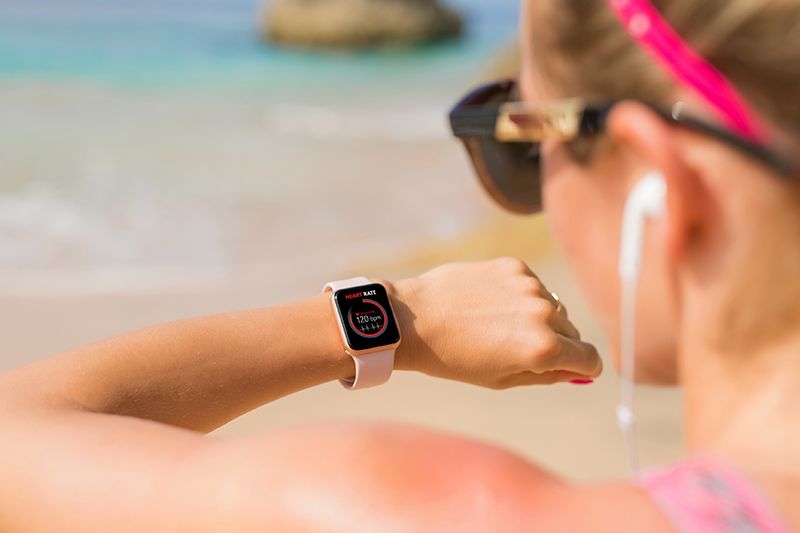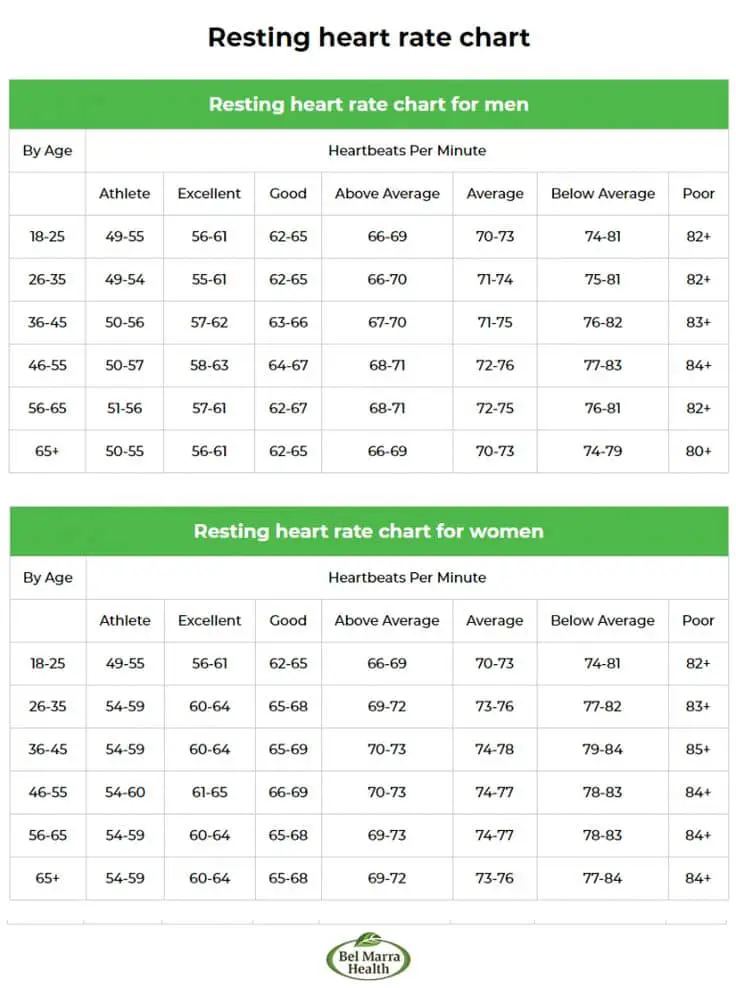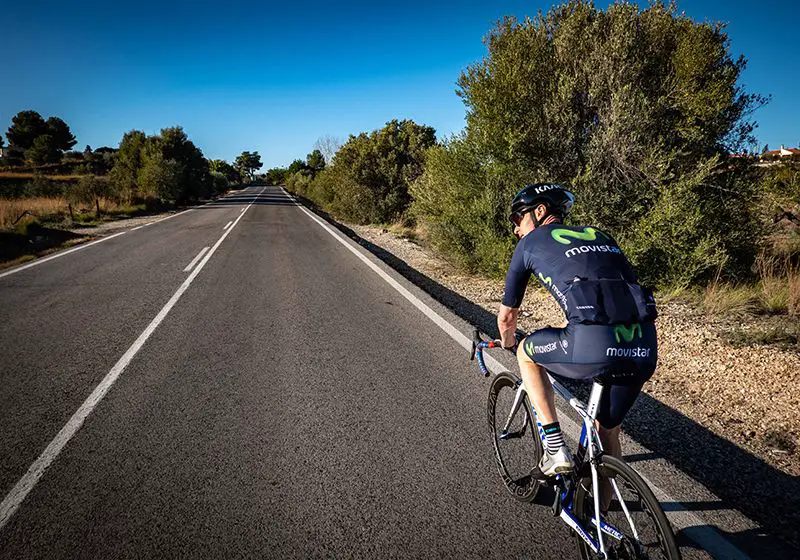What Is The Normal Heart Rate Of Athletes At Rest?
Training recovery is a very vague concept. More often than not how we feel does not fully reflect what is actually happening in the body. That’s when knowing what’s your personal and normal heart rate of athletes at rest comes in handy.
Heart rate for an athlete is a versatile metric and is particularly useful to manipulate the training process. After all, it reflects all stress factors that affect the body on a particular day. Sleep quality, weather, impact of previous training, etc. Doesn’t matter whether if it’s an all-out sprint set or staying up late one night – athletes pulse rate at rest will go wild the next morning.
Resting heart rate, in particular, is a great way to track aerobic fitness improvements over time and also tell with a high amount of certainty if the body is in optimal condition for a training session or not.
Let’s explore why.
How to calculate resting heart rate (and why)
Resting Heart Rate (Rest HR or RHR) is a heart rate measurement generally taken first thing in the morning – even before rolling out of bed.
To calculate resting heart rate, simply put two fingers on the inner side of the wrist (closer to the thumbs) or on the side of your throat (slightly below the jaw). Count how many beats your heart makes in 10 seconds and multiply that number by 6.
If you tend to train in the evening it’s good to check the rest HR throughout the day as well. Such approach will give you a better view of how stressed the body is and if it’s ready for the next training session. In such case, lie down and relax for 3 minutes. After that, take the measurement and compare it to the one taken in the morning.
Related: How To Measure Post Workout Recovery And Avoid Accumulated Fatigue
Heart rate of athletes at rest
Sportsman heart rate increases when the body undergoes more stress, because it has to deliver oxygen and nutrients to various areas of our body quicker.
During times of higher stress – physical, psychological or environmental – the body has to work harder. It processes the cortisol and adrenaline hormones, repairs the damage and, in general, normalizes all processes. All of that requires the heart to pump more blood to deliver oxygen and nutrients. Which, logically, results in an increased pulse for athletes.
Resting heart rate is, essentially, an indicator of how stressed our body is.
Keeping track of Rest HR, athletes can monitor their training stress and recovery, as well as time their training sessions for maximum performance.

Athletes average resting heart rate vs. regular people
Normal resting heart rate for an average person is somewhere between 60 and 80 beats per minute (bpm). Older people tend to have lower figures and women, on average, have 5-10 bpm higher figures. See the fitness heart rate chart below.
Typically, higher measurements (or elevated compared to a person’s ‘normal’ resting heart rate) means the body is under stress – be it poor metabolic fitness, stressful week at work or just fatigue from a hard training session.

Why do athletes have a lower resting heart rate?
Trained athletes, on the other hand, are not normal people. Especially those practicing endurance sports.
For regular people resting heart rate under 60 bpm is a potential indicator of bradycardia – a condition when the heart doesn’t pump enough oxygen-rich blood to internal organs, including the brain. For a trained athlete, however, such resting heart rate is normal. Thanks to regular aerobic exercise the heart increases in size, the capillary network gets more developed, stroke volume increases and levels of blood plasma increase. All of that leads to more blood being pumped out and transported across the body more effectively with every beat. So, the blood doesn’t need to make that many circles around the cardiovascular system to deliver oxygen and nutrients, which, in turn, results in an overall lower heart rate – both during exercise and at rest.
A decrease in heart rate for an athlete over time can also be a signal of improvements in aerobic fitness.
In other words, the heart muscle becomes so big and efficient that it doesn’t need to beat that many times. With each beat more blood is carried, so less beats are required.

The Resilient Athlete
A Self-Coaching Guide to Next Level Performance in Sports & Life
Are you aiming to become a resilient athlete who is able to withstand any pressure? Be able to jump on any opportunity? Take any challenge life throws at you head on?
Then this book is for you.
Learn moreFamous athletes resting heart rate & athletic heart syndrome
Those athletes who often see their resting heart rate under 50 bpm (or even 40) may be experiencing an athletic heart syndrome. In the majority of cases it’s a sport adaptation – a result of years of aerobic training.
Elite athlete physiology is unique. They can have a 40 beats per minute heart rate at rest, yet easily increase it to 180+ beats per minute during intense exercise.
Resting heart rate of elite athletes tends to be pretty low. Most of the top ones see their heart rate in the 30’s:
- Eliud Kipchoge (marathon) – 33bpm
- Paula Radcliffe (marathon) – 38bpm
- Michael Phelps (swimming) – 38bpm
- Usain Bolt (track & field) – 33bpm
- Serena Williams (tennis) – 43bpm
- Martin Fourcade (biathlon) – 25bpm
- Steve Redgrave (rowing) – 36bpm
- Tadej Pogacar (cycling) – 36bpm
- Jan Frodeno (triathlon) – 36bpm
- Rich Froning (crossfit) – 26bpm
Martin Fourcade and Rich Froning have probably some of the lowest athlete heart rate.
Related: 3 Ways To Determine Maximum Heart Rate And Why Athletes Need It
How to calculate resting heart rate baseline & use it in training
Recovery activities take place in the background and can continue for hours (or days) after the stress response took place. We can do a high intensity sprint set or go out partying with friends, the result will be the same – increase in resting heart rate the next morning. That is not a coincidence, but a reflection of how stressed the body is and how unprepared it would be for a hard training session.
As mentioned, heart rate for an athlete is a great tool to track recovery. Monitoring RHR on a daily basis will give an athlete the understanding of how the recovery after a hard training session is progressing. It can also help to notice first signs of overtraining and be a reference in determining how quickly after an illness to resume high intensity training.
Everyone’s different and pulse for athletes is individual too. So, it’s important to establish a baseline, which is an average RHR for the past 7 days. Measure RHR every day for a week to figure out your normal resting heart rate level. That normal heart rate of athletes at rest can vary by 1-3 beat per minute (bpm) on any given day due to day-to-day stress, weather, sleep quality, etc.
What does a high resting heart rate mean?
Resting pulse higher than ~5-7 bpm or 10% (whichever is higher) than the baseline indicates that the body is not fully recovered and the body is under stress.
Such significant deviations from the baseline can result from fatigue (i.e. after a hard training session), lack of sleep, dehydration, illness or even a stressful week at work. If that happens, the body is not 100% ready for the next key session.
On the other hand, when athletes pulse rate at rest returns to baseline (or even goes under it), it’s a signal that the body is fully recovered (or even supercompensates). In such condition, athletes tend to tolerate more training load and improve better. Athletes should aim to completely recover on a constant basis to make sure they are improving fitness.

Why is my resting heart rate high on a given day?
If heart rate of athletes at rest on a given day is higher than usual (more than 10% from ‘normal’), they should take a rest day or do a very easy session in Zone 1. By training through fatigue athletes will only dig a bigger hole for themselves that they need to climb out of later.
However, if the measurement gradually climbs over a period of several weeks, then it’s a signal of accumulated fatigue. The body is, most probably, running on reserves and moving into over training. This is the time to consider taking a recovery week. It will help to grow stronger and feel much better.
I usually take a week focused on Zone 1-2 efforts every month to recover after hard weeks of training.
Here’s a little example. A male runner, let’s call him Mario, has measured resting heart rate to be 45bpm on average. Throughout a week of hard training his RHR was around 46-49. On Saturday night he went to dinner with friends and stayed up late. Waking up the next morning his RHR jumped to 56, which shows that the body hasn’t recovered at all and requires extra time off.
If Mario will ignore this and go for a hard session, it will not be as productive and will get him even more fatigued. The best solution would be to skip the session, considering a solid training block that he needs to recover from.
Related: Train Smart – A Practical Guide to Exercise Heart Rate Zones
Why is my resting heart rate going up?
Often pulse of an athlete can signal an oncoming illness. When body fights infection, the body temperature increases and, as a result, heart rate of athletes at rest also increases. It’s estimated that for every 1 °C increase, RHR can jump by 10-15 bpm, because the body is working overtime to cool itself and fight disease.
Athletes are generally eager to get back into training after an illness. However, resuming intense training schedule after the first symptoms have subsided is not the best approach.
Very often even if we feel better, our body still struggles with stress.
As the body recovers from an illness, resting heart rate also decreases. Sometimes an athlete may feel healthy, but the RHR is still high. It’s a good indication that the body is not 100% healthy yet. In such cases it’s best to resume training only in aerobic mode (Zones 1 and 2) until RHR gets to the ‘normal’ state.
Some viruses need a couple of weeks for the body to fully combat and recover from.
Did you find this information useful to help you calculate resting heart rate and apply in your training? Share the post with others using the buttons below.
Have an opinion? Share via links below and tag @theathleteblog
Tags In
Andrejs Birjukovs
GET A FREE TRAINING PLAN
Subscribe to my email list and get access to a free 4-week “back in shape” training plan
You’ll also get two full-body strength sessions and some other goodies!

How did I get here?
Hey there! My name is Andrejs and I am here to inspire, entertain and get you fit for any adventure.
I went from being an over trained pro athlete to an endurance coach sharing how to listen to your body and live life to the fullest.
Traveling, new sports & activities brought new meaning to my training and made it much more effective, fun and enjoyable. And I'm here to help you do the same.


